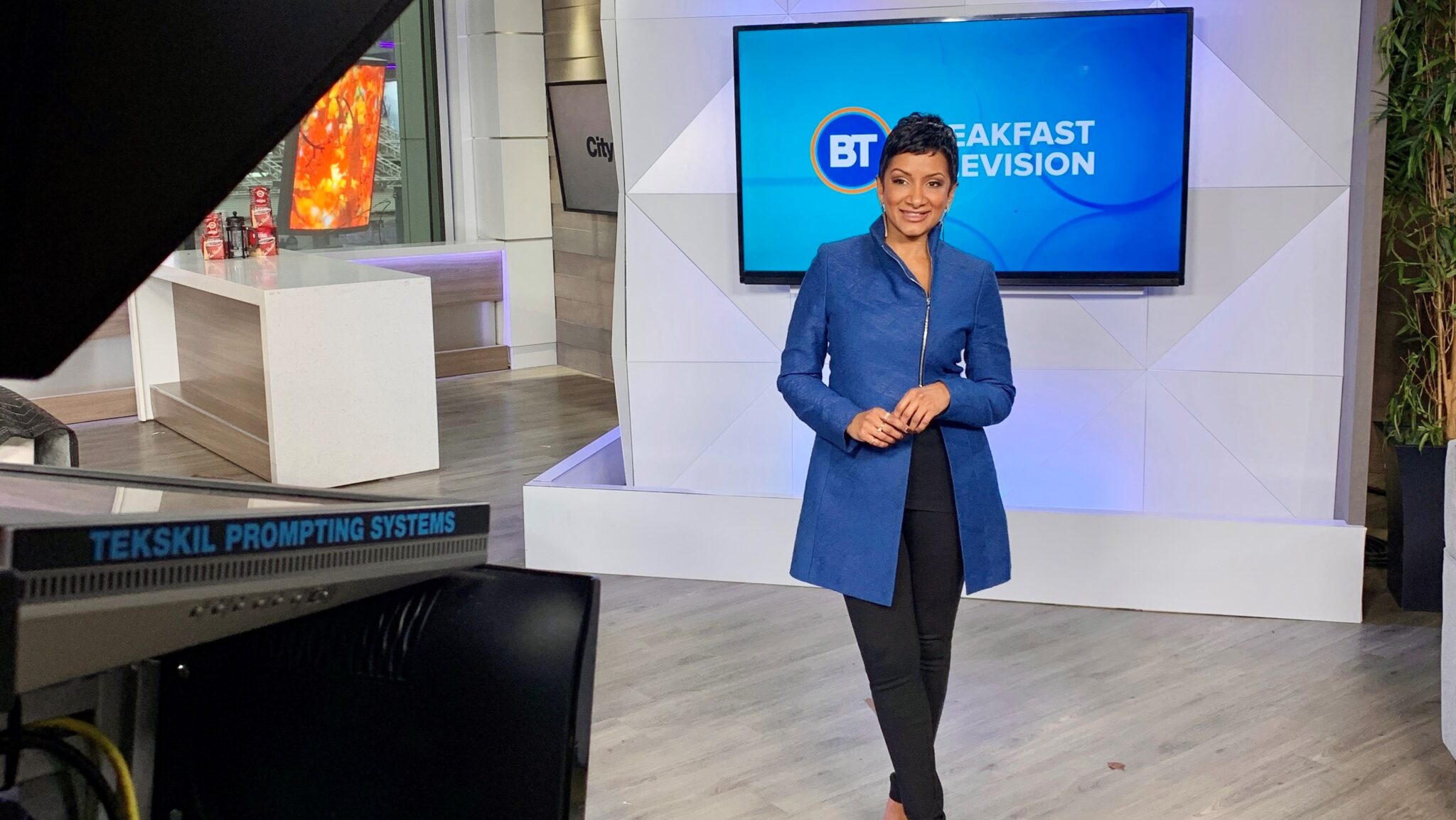Citytv’s Natasha Ramsahai shares her journey to becoming Canada’s first person of colour to be a Chief Meteorologist

“It is a huge responsibility having this position looking like me, because I know that so many racialized youth are looking at me….wondering who I am, where I came from, how I got here. I want them to know that my story is like theirs.”
As a long-time meteorologist on Toronto’s CityNews, Natasha Ramsahai is a familiar and trusted face – using her Masters in Meteorology degree to elevate the standard of weather news to deliver vital information to audiences for more than a decade. Now, as the newest Chief Meteorologist – and first person of colour in the country to hold this title – Natasha continues to break down barriers.
Today, as we continue our celebration of Black History Month, Natasha shares how her determination and passion for science has led to her extraordinary career in broadcasting, and how she hopes inspire girls, women and racialized youth across Canada to break down stigmas and pursue their dreams.
Tell us about your journey to become Chief Meteorologist for CityNews?
It has been a decades long journey for this girl from Scarborough to rise to this position of Chief Meteorologist. I always had an affinity for the sciences, specifically environmental physical sciences. When I was in school at York University obtaining my Masters in Meteorology, I had no intention of entering the broadcast arena. My focus was on becoming a Warning Preparedness Meteorologist for Environment Canada. I wanted to be the one who issued tornado warnings and save the public!
I was content being an On-Air Meteorologist until I started attending the American Meteorological Society’s annual broadcast meteorology conference almost 20 years ago. All the TV meteorologists there were “Chiefs”, something that was barely recognized in Canada at the time and has only now begun to be more recognized for the past 10-12 years or so. This is because most people on air for weather in Canada are weather presenters or weather specialists, not meteorologists.
Traditionally, there have not been weather “teams” to manage. It has been difficult trying to convey the importance of such a role within the Canadian news industry. As weather teams at stations have grown, so too has the importance of a team leader.
About 15 years ago I had tried pitching the title of “Senior Meteorologist” to my news director at the time at another station but was laughed at, being told “it’s just weather”. Unfortunately, many women meteorologists have had to fight the “weather girl” stigma for decades to be taken seriously as a scientist. There is also the stereotype that all scientists wear white lab coats and glasses, and that if you don’t look like that you can’t possibly be a scientist. Thankfully these stereotypes are changing.
What does it mean to you to be the first person of colour to be named Chief Meteorologist in Canada?
I couldn’t believe that in 2023 there isn’t another BIPOC Chief Meteorologist in all of Canada. In fact, it blows my mind that even when considering all on-air meteorologists in the country, you can count the BIPOC on one hand.
It is a huge responsibility having this position looking like me, because I know that so many racialized youth are looking at me quizzically. Wondering who I am, where I came from, how I got here. I want them to know that my story is like theirs. That I came from immigrant parents who had no connections or networks in the country. Hopefully as they investigate and research my story it will inspire them to go down a path where they too might be blazing a trail for the generations after them. It is a door opener to have a seat at the table to help make decisions that can change the industry, that’s huge. I frequently go to schools and organizations to speak to youth about weather and a career in science. Now when I walk in the door and get introduced as Chief Meteorologist, I hope that it is inspiring and instills an elevated sense of “yeah, I can do that too” especially in young girls and women who want to be scientists.
How do you hope to inspire girls and women to pursue careers in science?
My position as a Chief Meteorologist in the broadcast field is a unique opportunity to influence change and get people talking. My platform combined with social media allows a substantial reach to many communities. I am blessed with the ability to start conversations with thousands of people at the same time. While I post fun things as well for engagement, my ability to turn a science lens on to a post lends itself to thought-provoking ideas. I have to be creative with my posts for engagement and show people why a certain subject matter is important.
In the end, the putting forth of solutions and not just the problem is key. It’s not going to result in change if you simply state say, climate change problems, without also stating possible solutions for discussion. Or having the knowledge and position I have without sharing it with others, there is room at the table for everyone.
